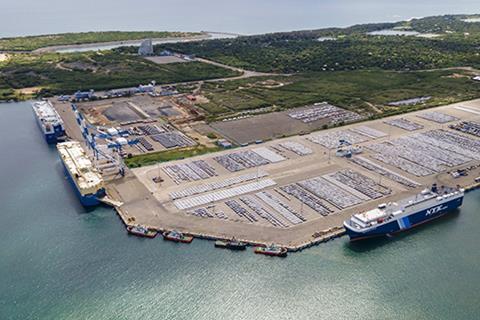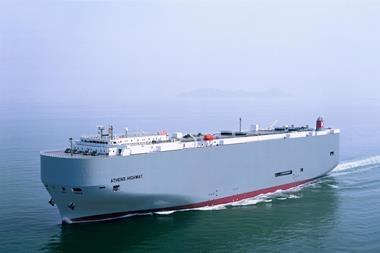Hambantota International Port has reported an increase in finished vehicle throughput by 26% last year, compared to 2022. Its vehicle terminals handled 700,000 transhipments, a figure its chief operating officer Tissa Wickramasinghe, said put it in “the top end of the league” compared with other transhipment ports in the region.

“This is a commendable achievement for a port that has been in operation for just six years, and we achieved this amidst various challenges from lockdowns to a serious economic downturn in the country,” he said.
The port’s ro-ro business has grown significantly in the last five years, benefitting from a strategic location for both the Pacific and Indian oceans. The port recorded its busiest month for 2023 in September when it handled just more than 75,600 vehicles and recorded 32 ro-ro vessel calls.
Wickramasinghe pointed to the strategic decision made by Hambantota International Port Group (HIPG) when it took over the port to establish it as a regional transhipment hub for ro-ro cargo. It entered into agreements with ro-ro lines and attracted a number of new Japanese ro-ro vessel lines. Nine main shipping lines use the port for transhipment volumes.
“We developed a dedicated team to follow global trends in ro-ro transhipment scenarios and developments,” he added. “This enabled us to make the required investments in new equipment, new technology and IT systems.
In June last year HIPG invested $8m in building an additional 68,000 sq.m of parking space, which is due for completion in the first quarter of this year.
Hambantota port was privatised in 2017 and the China Merchants Port was given a 70% controlling stake in HIPG by the Sri Lankan government, along with a 99-year lease for $1.12 billion. The Sri Lankan Ports Authority has the minority stake in HIPG.

























![Global[1]](https://d3n5uof8vony13.cloudfront.net/Pictures/web/a/d/s/global1_726550.svgz)













No comments yet